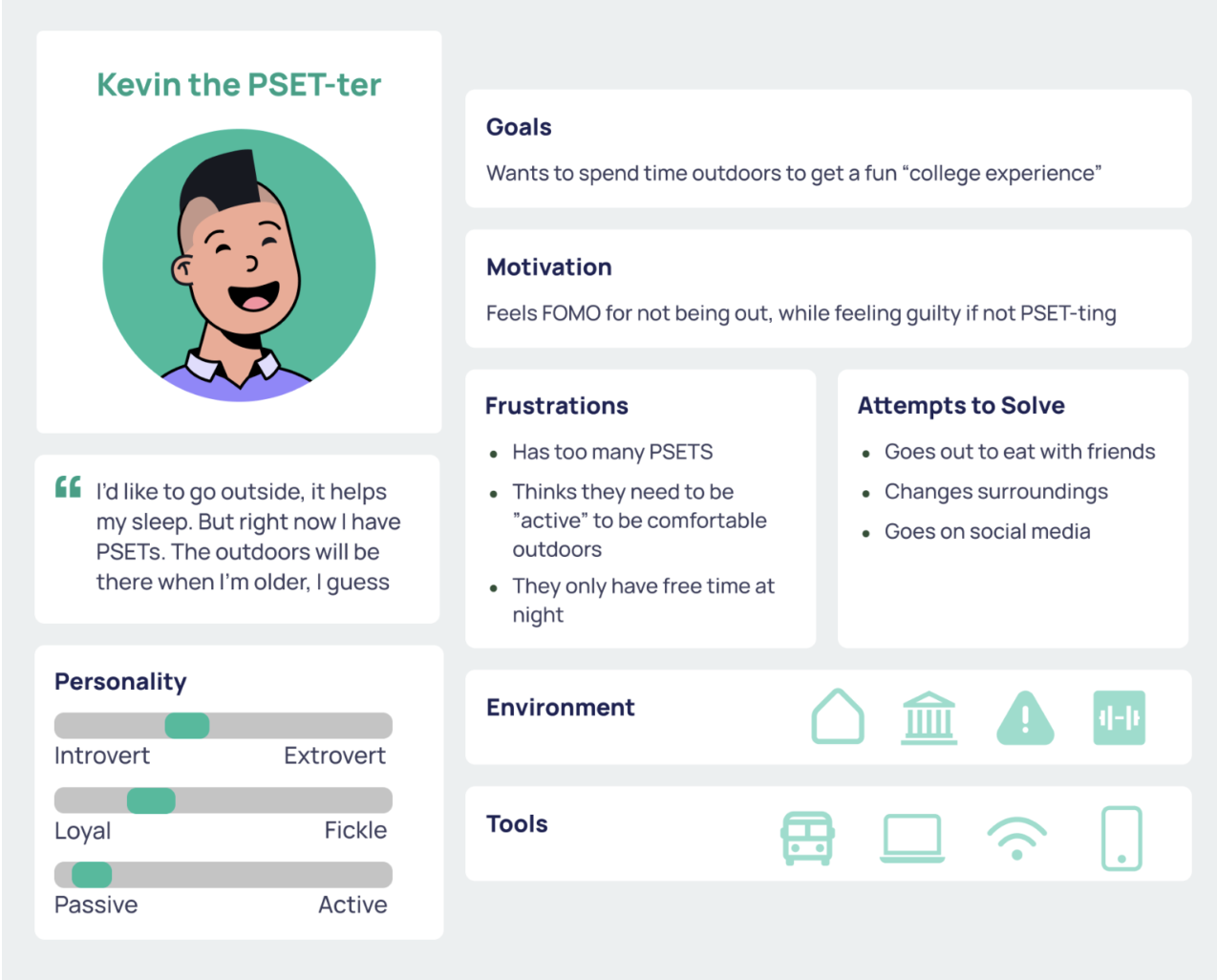Paseo
Description
Paseo promotes well-being by supporting the physical and mental health of users through increased time spent outside. Core features include daily and weekly challenges to be done and/or documented individually and/or with accountability partners.
About
I conceptualized Paseo alongside a group of 3 during my course CS247B- Design for Behavior Change.
When we were brainstorming problem spaces to tackle, we came up with a diverse set of ideas, and the main patterns that emerged upon our selection were that we wanted to incorporate wellness, reflection, and novelty components into our final project. We also thought critically about how society had drastically changed over the last few years and what was left behind, deprioritized, or lacking due to the pandemic. We realized that due to increasing responsibilities, technological advances, and a shift to work-from-home culture, many people are spending the majority of their time indoors. Therefore, we decided to explore how to make spending time outside accessible to people, whether that means geographically, navigationally physically, or psycho-culturally.
Our general process went like this (all of our findings are included in our report linked below):
We start off by conducting exploratory research on existing products that get people outdoors and evaluated them in terms of how much energy activation they require and the level of impact they have on someone’s wellness. Since none of us are medical professionals, and wellness is a broad term, we looked at scientific journals that explored the impact of several factors such as going outside and being social on a person’s short and long-term health outcomes. This, alongside our own personal wellness experiences, helped us evaluate how the existing products impact a person’s health. We found that there is a market gap for products that satisfy high wellness impact while requiring low activation energy from their users.
We conducted a baseline study of people’s behaviors to create personas, journey maps, and storyboards to better understand the opportunities for intervention and how we might intervene. After exploring various solutions, we came up with Paseo.
Different mapping activities allowed us to flesh out some of the more important components of our application and get a better understanding of how each part should work together to form a cohesive experience. We also plotted an assumption map to find key assumptions that we needed to validate in order to better understand how a user would navigate through our application and how our separate application components would have to come together to form their ideal experience. We identified key assumptions being:
Daily challenges will be appropriate in providing long-term motivation for our users.
People will value the social component of challenges outside.
We conducted experiments based on our assumptions, and we found that:
Personalized challenges made tasks easier to complete,
challenges that can be easily integrated into an everyday schedule are more motivating,
and social challenges are appropriate only when an appropriate window of time is given in order to organize and complete the challenges.
All of these findings influence our user flow. We created low-fi sketches and refined them after more user tests. Then, I created the Paseo branding and final app prototype using figma.















